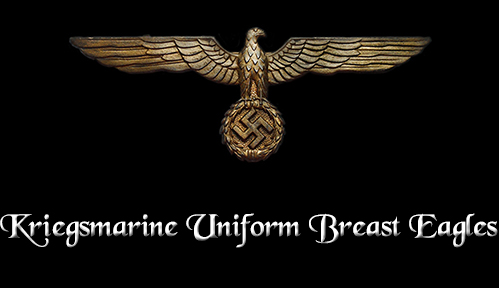

German Naval uniforms and headgear were based on traditional designs that date back to the creation of the Prussian Navy in 1848, and although uniforms and headgear did evolve during the interim years many items used during the Third Reich would still have been quite recognizable to the Imperial sailor.
The Kriegsmarine, (War Navy), adopted a slightly modified version of the NSDAP’s, Nationalsozialistische Deutsche Arbeiterpartei, (National Socialist German Worker’s Party), national eagle for wear on the front of the headgear and the right breast of the uniform on March 24TH 1934. The Kriegsmarine’s version of the national eagle was identical to the army version except for the coloration with the army utilizing silver, white and grey eagles while the Kriegsmarine utilized golden yellow eagles. The only exceptions in the coloration of the Kriegsmarine eagles was that personnel serving in the Administrative branch utilized a silver eagle while eagles worn on the white jumper shirts were in cornflower blue.
Generally, office ranks used hand embroidered breast eagles while NCO/Maanschaften ranks used machine embroidered or machine woven breast eagles. Besides the hand embroidered, machine embroidered and machine woven breast eagles the Kriegsmarine also utilized removable, metal breast eagles on a limited basis. The metal breast eagles were generally restricted to Officer ranks and were worn on the white tunic, the white mess jacket and the tropical brown and white tunics as opposed to the metal breast eagles utilized by the German army which were only worn on the white summer tunic.
There were many variations of the breast eagle, in both metal and cloth. The examples shown below are but a small number produced during the time.
Metal breast eagles for Officer summer uniform
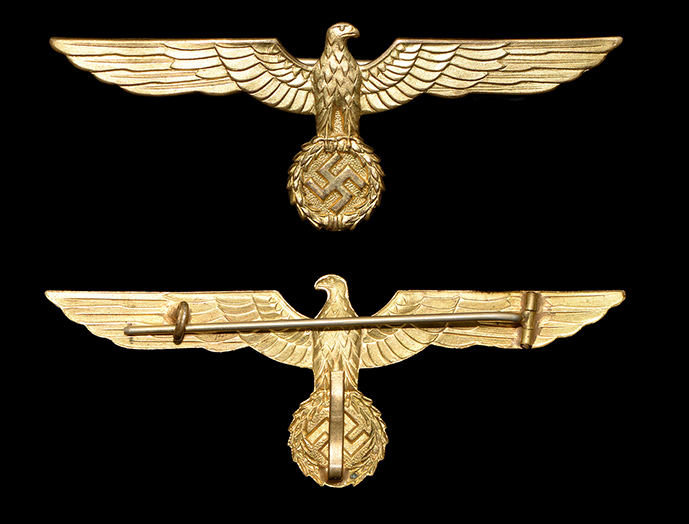
An early example of a die stamped gilt breast eagle for the white tunic, the white mess jacket and the tropical brown and white tunic - gilded tombac
maker: F.W Assmann - Lüdenscheid
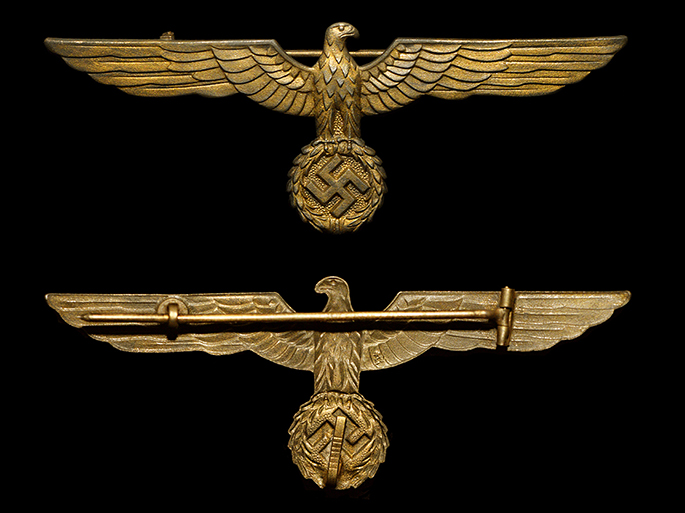
Die stamped gilt breast eagle for the white tunic, the white mess jacket and the tropical brown and white tunic -zinc
maker: F.W Assmann - Lüdenscheid
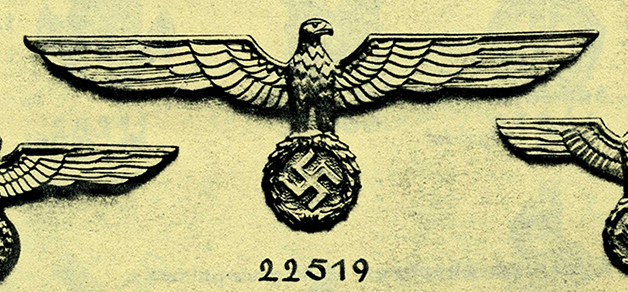
From the period catalogue of F.W Assmann - Lüdenscheid
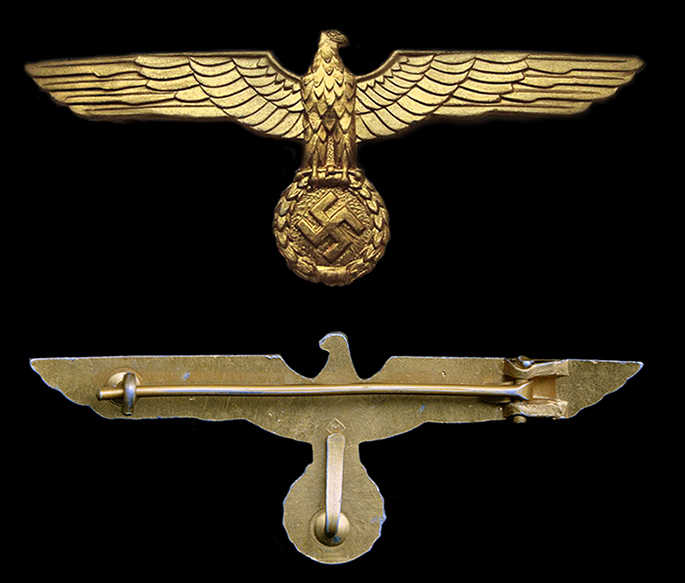
maker: J. C Maedicke - Berlin
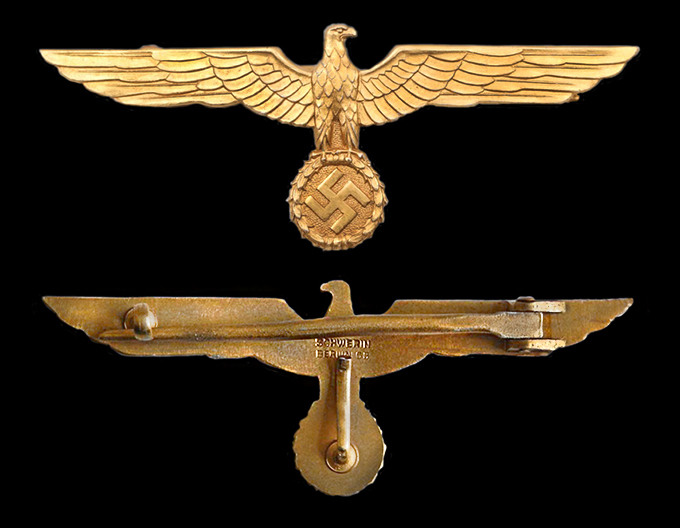
C. Schwerin & Sohn - Berlin
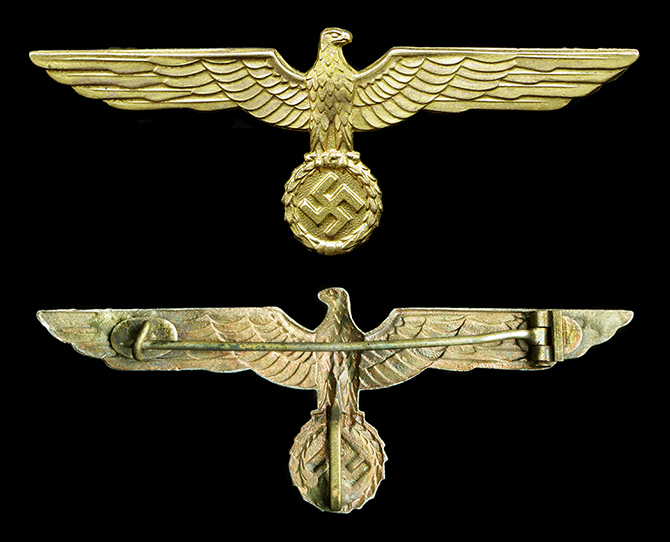
Attributed to Friedrich Linden, Lüdenscheid
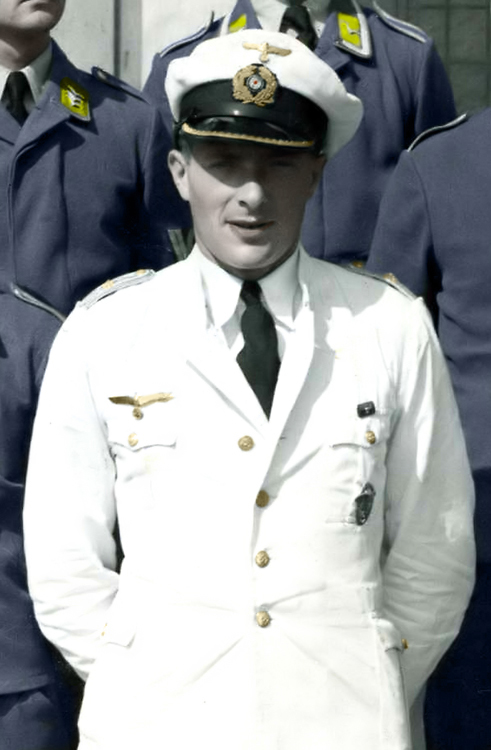
Kriegsmarine white tunic with gilt metal eagle, in wear
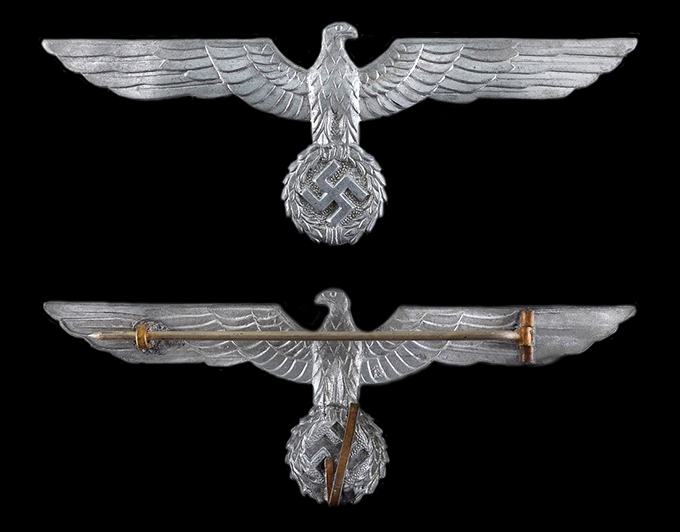
Die stamped silver (Administrative branch) breast eagle for the white tunic, the white mess jacket and the tropical brown and white tunic
Maker: F.W Assmann - Lüdenscheid
Due to the silver insignia the Administrative personnel were contemptuously referred to as Silberlinge, (Silvered Ones)
![]()
Cloth breast eagles for Officers, Non-Commissioned Officers and Enlisted men
Officers
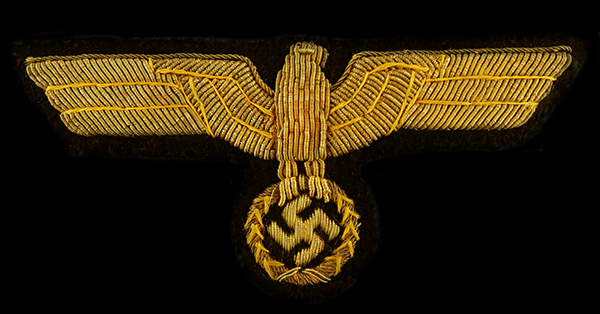
Hand embroidered gilt bullion breast eagle as worn by flag and line officers of the Kriegsmarine
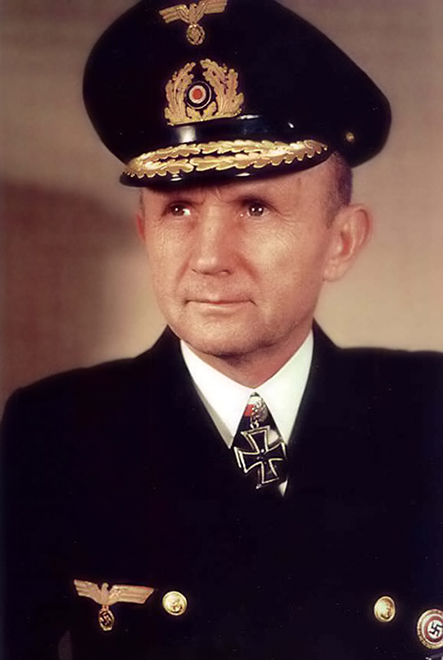
Admiral Karl Dönitz with gilt hand embroidered breast eagle in wear
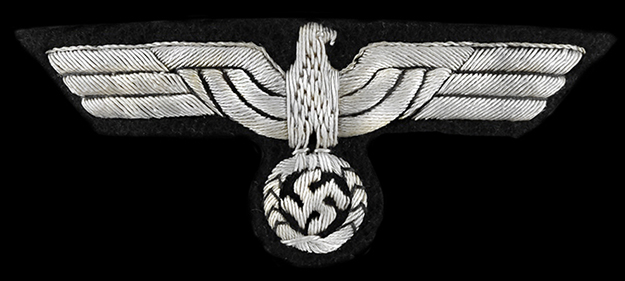
Silver version for Administrative branch
Non-Commissioned Officers and Maanschaften
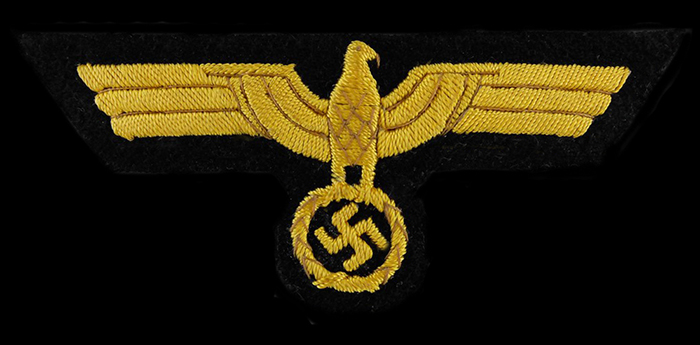
celleon on wool backing
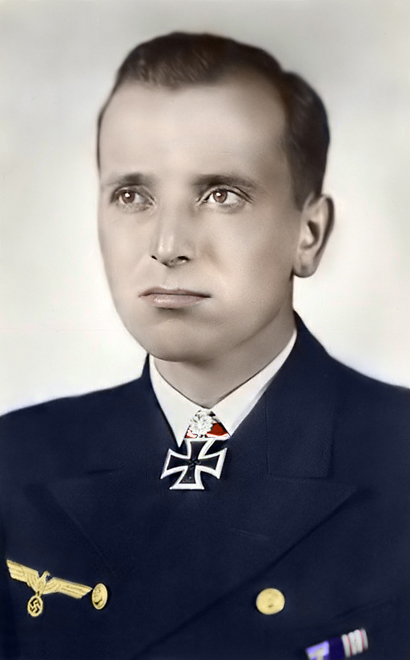
U-Boat Ace, Korvettenkapitän Otto Kretschmar seen here wearing a celleon breast eagle
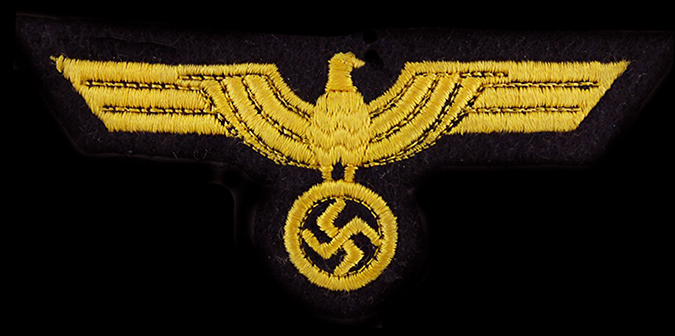
Cotton on wool backing
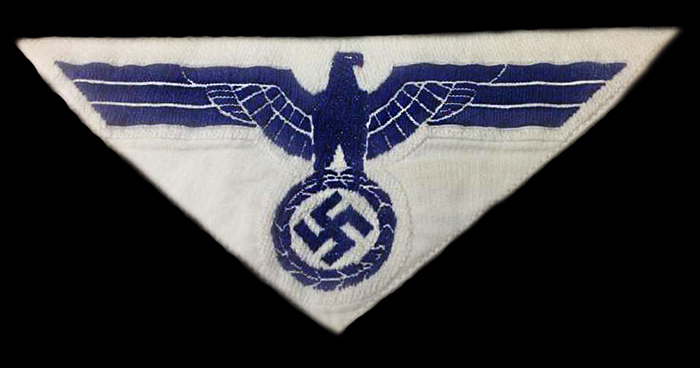
Breast eagle for the white jumper shirt
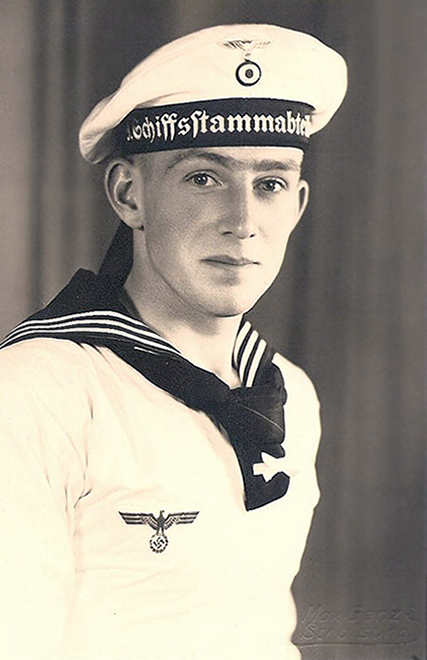
white jumper shirt breast eagle in wear
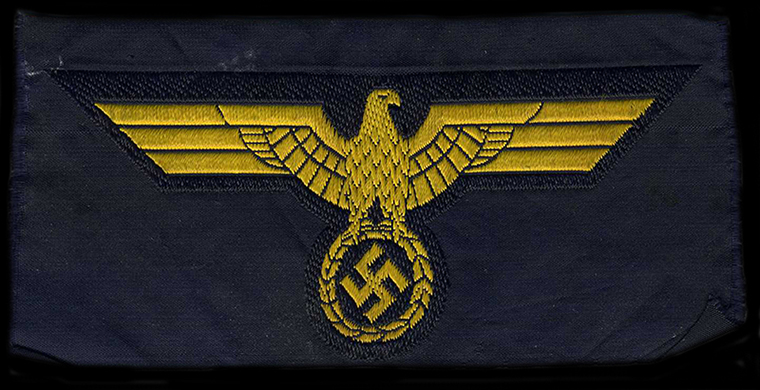
Bevo breast eagle - unissued
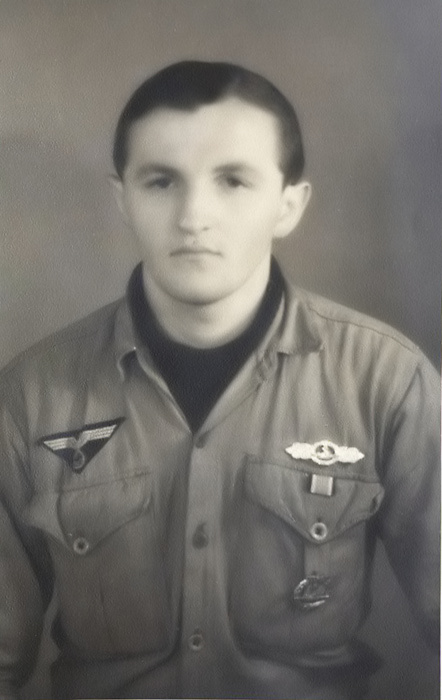
Bevo breast eagle in wear
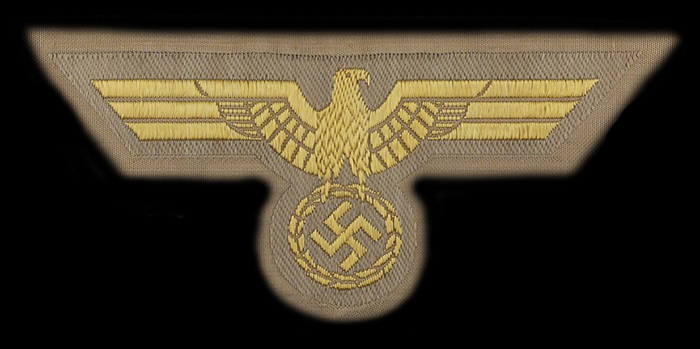
Bevo tropical breast eagle
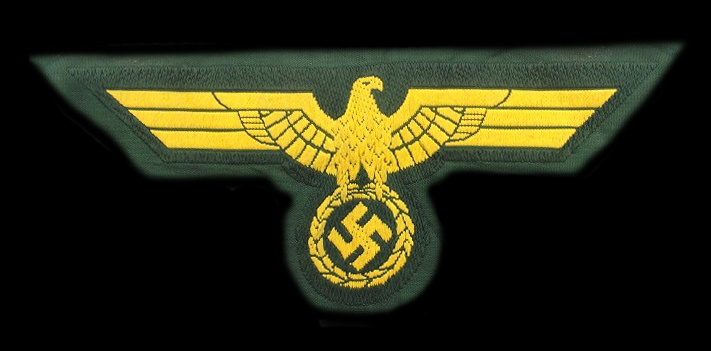
Coastal artillery breast eagle
![]()
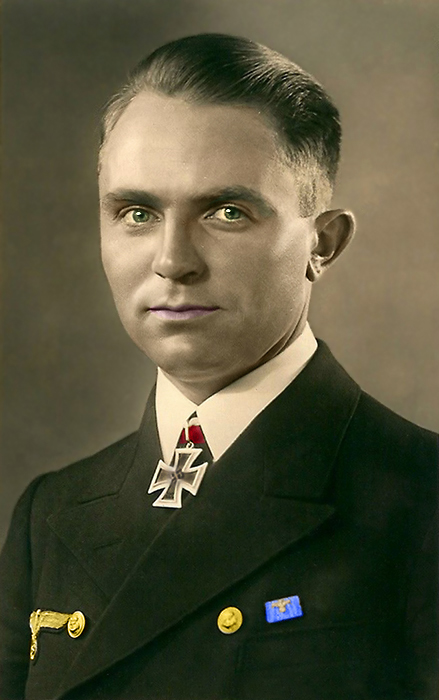
Günther Prien (16 January 1908 – 7 March 1941) was a German U-boat commander during World War II. He was the first U-boat commander to receive the Knight's Cross of the Iron Cross and the first member of the Kriegsmarine to receive the Knight's Cross of the Iron Cross with Oak Leaves of Nazi Germany. It was Germany's highest military decoration at the time of its presentation to Prien.
Although Prien was at sea for less than two years, his record stands high among the U-boat aces during the Second World War. He spent 238 days at sea and sank 30 enemy vessels for a total tonnage of 193,808 GRT.